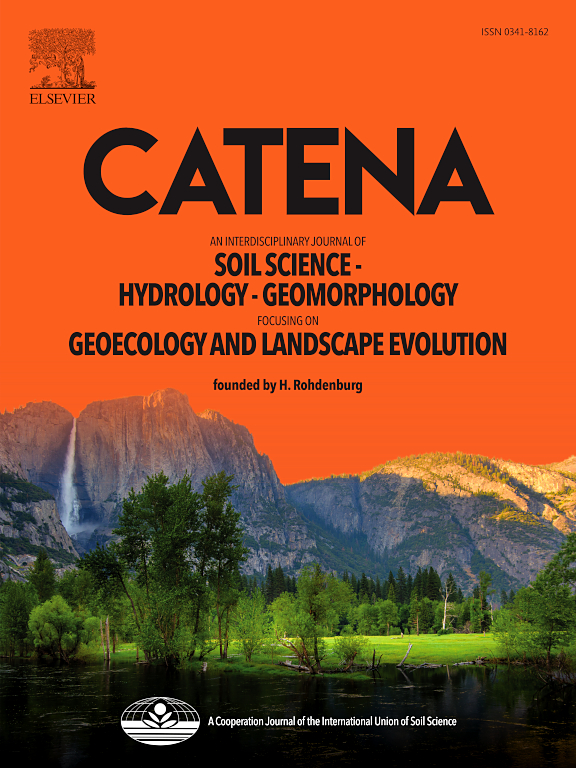Random root distribution affects the mechanical properties of the soil-root composite and root reinforcement
IF 5.4
1区 农林科学
Q1 GEOSCIENCES, MULTIDISCIPLINARY
引用次数: 0
Abstract
Roots can mechanically reinforce soils against landslides, but the impact of their typically random and complex distribution on this reinforcement is not well understood. Here, using a modelling approach based on homogenization theory, we aim to assess the effect of the randomness and complexity of root spatial distribution in soils on the mechanical properties of the soil-root composite and the resulting reinforcement. To do this, we modeled the soil-root composite as a three-dimensional (3D) soil column through which parallel roots penetrate vertically. The unit cell (UC) of the soil-root composites with a nonuniform root distribution was created based on the characteristics of root diameter distributions of Elymus dahuricus measured in the field, and the equivalent elastic modulus and strength parameters of the composites were calculated. The accuracy of the homogenization method was verified by direct shear tests with undisturbed soil-root samples. The results showed that the UC model of the soil-root composites could effectively predict its equivalent elastic parameters. A parametric analysis using the proposed homogenization model showed that roots can mobilize significant soil portions to resist deformation by increasing both the number and complexity of root distributions, even at the same root volume ratio. This makes the stress distribution in the soil more uniform and improves the shear strength of the soil-root composites. The presence of Elymus dahuricus roots significantly improved the shear strength of the soil-root composites, primarily due to an increase in cohesion of 23%. This study presents a new perspective on the development of a constitutive model for soil-root composites and highlights its potential value for engineering applications that use roots to reinforce soils.
求助全文
约1分钟内获得全文
求助全文
来源期刊

Catena
环境科学-地球科学综合
CiteScore
10.50
自引率
9.70%
发文量
816
审稿时长
54 days
期刊介绍:
Catena publishes papers describing original field and laboratory investigations and reviews on geoecology and landscape evolution with emphasis on interdisciplinary aspects of soil science, hydrology and geomorphology. It aims to disseminate new knowledge and foster better understanding of the physical environment, of evolutionary sequences that have resulted in past and current landscapes, and of the natural processes that are likely to determine the fate of our terrestrial environment.
Papers within any one of the above topics are welcome provided they are of sufficiently wide interest and relevance.
 求助内容:
求助内容: 应助结果提醒方式:
应助结果提醒方式:


